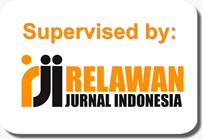DETERMINING THE MARKETING STRATEGY OF STIE MAHAPUTRA RIAU USING THE K-MEANS CLUSTERING ALGORITHM METHOD
Abstract
The difficulty of getting new prospective students requires STIE Mahaputra Riau to be able to design an effective and efficient marketing strategy. This study aims to determine a marketing strategy using the K-Means Clustering method. The K-Means Clustering algorithm method is to cluster data based on the attributes of student name, school of origin, area of origin and chosen study program, so that cluster data output is obtained that can be used in making marketing strategy decisions. The sample data used in this study are data from high school, vocational high school or equivalent students who are in the third grade in 2023, specifically for the province of Riau and its surroundings, totaling 750 data. The results of this study indicate that based on the total student data of 750 people, they are grouped into 3 clusters. Cluster 1 consists of 145 people from Rokan Hulu, Indragiri Hilir, Bengkalis, Kuantansingingi and West Sumatra Regencies. Cluster 2 consists of 344 people from Kampar and Indragiri Hulu Regencies. And cluster 3 as many as 261 people from Pelalawan, Siak and Rokan Hilir Regencies. It was also found in each cluster, the study program with the most interest was the S1 Management study program. So the marketing strategy implemented should pay attention to the area of origin and the study program chosen as the basis for implementing policies in accepting new prospective students.
Keywords : Data Mining, Marketing Strategy, Clustering, K-Means Method
Full Text:
PDFReferences
Agusta, Y. (2007). K-Means – Penerapan, Permasalahan dan Metode Terkait. 3(Pebruari), 47–60.
Baridam, B., & Ali, M. M. (2013). An investigation of K -means clustering to high and multi-dimensional biological data. https://doi.org/10.1108/K-02-2013-0028
Bonnema, J., & Van Der Waldt, D. L. R. (2008). Information and source preferences of a student market in higher education. International Journal of Educational Management, 22(4), 314–327. https://doi.org/10.1108/09513540810875653
Budiarti, A., Sucahyo, Y. G., & Ruldeviyani, Y. (2006). Studi karakteristik kelulusan peserta didik dengan teknik. 199–207.
Güçdemir, H., & Selim, H. (2015). Integrating multi-criteria decision making and clustering for business customer segmentation. Industrial Management & Data Systems, 115(6), 1022–1040. https://doi.org/https://doi.org/10.1108/IMDS-01-2015-0027
Han, J., & Kamber, M. (2016). Data Mining: Concepts and Techniques.
Hidayat, R., Menhard, M., Charli, C. O., & Masnum, A. (2023). Determination Purchase Intention and Purchase Decision : Brand Image and Promotion Analysis ( Marketing Management Literature Review ). 4(1), 152–165.
Hidayat, R., Piliang, A., Safrizal, S., & Sugianto, S. (2022). Pengaruh Harga Dan Kualitas Pelayanan Terhadap Kepuasan Konsumen Pada Hotel Cititel Sisingamangaraja Pekanbaru. Jurnal Ilmiah Multidisiplin, 1(05), 131–136. https://doi.org/10.56127/jukim.v1i05.523
Jauhar, S. K., Chakma, B. R., Kamble, S. S., & Belhadi, A. (2023). Digital transformation technologies to analyze product returns in the e-commerce industry. Journal of Enterprise Information Management. https://doi.org/https://doi.org/10.1108/JEIM-09-2022-0315
Larose, D. T., & Larose, C. D. (2014). Discovering Knowledge in Data (2nd ed). Wiley. https://www.perlego.com/book/996125/discovering-knowledge-in-data-an-introduction-to-data-mining-pdf
Liu, J., Liang, B., & Ji, W. (2021). An anomaly detection approach based on hybrid differential evolution and K-means clustering in crowd intelligence. International Journal of Crowd Science, 5(2), 129–142. https://doi.org/10.1108/IJCS-07-2020-0013
Mahdiraji, H. A., Tavana, M., Mahdiani, P., & Kamardi, A. A. A. (2022). A multi-attribute data mining model for rule extraction and service operations benchmarking. Benchmarking: An International Journal, 29(2), 456–495. https://doi.org/https://doi.org/10.1108/BIJ-03-2021-0127
Nasari, Fina, A., & Charles J. M., S. (2016). Penerapan Algoritma K-Means Clustering Untuk Pengelompokkan Penyebaran Diare Di Kabupaten Langkat. Cogito Smart Journal, 2(2), 108–119. https://doi.org/10.31154/cogito.v2i2.19.108-119
Pramudyo, A. S. (2007). Case Based Reasoning untuk klasifikasi mahasiswa baru berdasarkan prediksi indeks prestasi pada semester I:: Studi kasus Program Studi Teknik Informatika Universitas Bina Darma Palembang. Universitas Gadjah Mada.
Santosa, B. (2007). Data Mining: Teknik Pemanfaatan Data untuk Keperluan Bisnis. Graha Ilmu.
Tleis, M., Callieris, R., & Roma, R. (2017). Segmenting the organic food market in Lebanon: an application of k-means cluster analysis. British Food Journal, 119(7), 1423–1441. https://doi.org/https://doi.org/10.1108/BFJ-08-2016-0354
Wang, B., Wang, G., Wang, Y., & Lou, Z. (2021). A K-means clustering method with feature learning for unbalanced vehicle fault diagnosis. 2018. https://doi.org/10.1108/SRT-01-2021-0003
Yanik, S., & Elmorsy, A. (2013). SOM approach for clustering customers using credit card transactions. https://doi.org/10.1108/IJICC-11-2018-0157
Yildirim, N., Gultekin, D., Hürses, C., & Akman, A. M. (2023). Exploring national digital transformation and Industry 4.0 policies through text mining: a comparative analysis including the Turkish case. Journal of Science and Technology Policy Management. https://doi.org/https://doi.org/10.1108/JSTPM-07-2022-0107
DOI: https://doi.org/10.31846/jae.v12i3.785
Refbacks
- There are currently no refbacks.

This work is licensed under a Creative Commons Attribution-NonCommercial-NoDerivatives 4.0 International License.
e-Jurnal Apresiasi Ekonnomi Indexed by:












